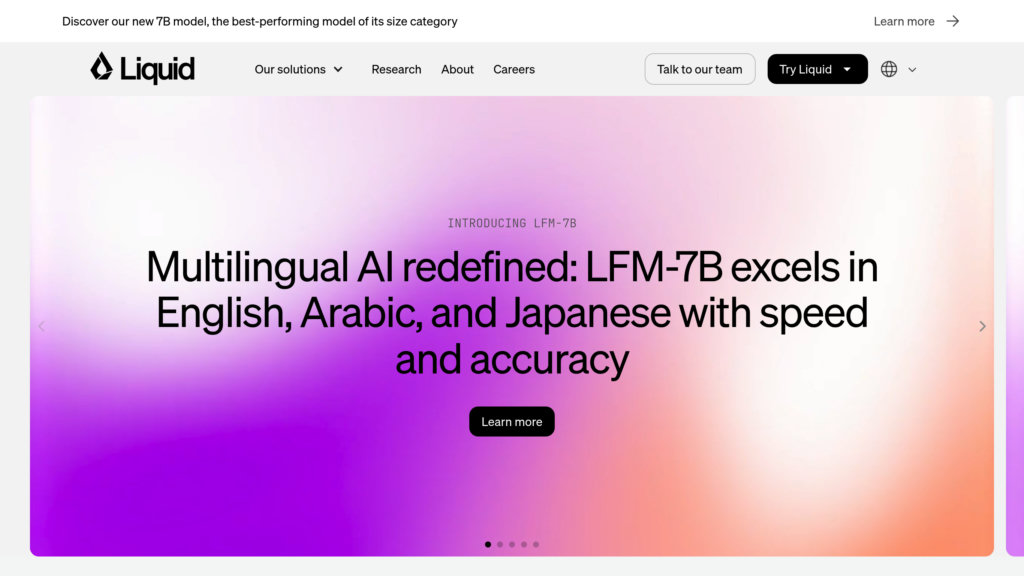Liquid AI
Liquid AI: Adaptive neural networks for efficient language and vision tasks
Introduction
Liquid AI: Next-Generation Foundation Models
Liquid AI creates advanced AI foundation models utilizing a novel liquid neural network architecture, drawing inspiration from biological systems. These models stand out for their superior flexibility, operational efficiency, and clarity over conventional AI designs. The technology supports continuous real-time learning, slashes computational expenses, and ensures reliable outcomes across various applications. Offering a spectrum from lightweight to powerful models, Liquid AI provides businesses with private, economical, and understandable AI solutions for processing text, sound, images, and sequential multimodal information.
Key Features
Dynamic Neural Architecture
Liquid neural networks continuously adjust to new information and changing conditions on the fly, drastically cutting down on the need for retraining and enhancing situational understanding.
Optimized Performance and Resource Use
Achieves powerful results using fewer computational parameters and less memory, making it ideal for implementation on edge devices and in settings with limited resources.
Transparent and Understandable AI
Compact and interpretable models allow for clear tracing of decision-making processes, building user confidence and aiding in meeting compliance standards.
Multimodal and Multilingual Proficiency
Capable of handling text, audio, visual, and time-series data; delivers top-tier performance in multiple languages including English, Arabic, Japanese, French, German, and Spanish.
Tailored Enterprise Solutions
Provides adaptable licensing options, on-premises installation, and customization tools to create bespoke AI solutions for specific business needs and industries.
Use Cases
Edge Computing and IoT : Implements lean, powerful models on edge devices for instant analytics, fault detection, and smart automation in industrial settings.
Autonomous Machines : Facilitates instant navigation and decision-making for robots, drones, and autonomous vehicles, requiring minimal processing power.
Business Automation : Drives effective, multilingual conversational agents and automated document systems for enhancing customer service and operational workflows.
Financial and Time-Series Analysis : Interprets and adapts to live data feeds for uses in financial markets, power grid management, and forecasting.
Healthcare Analytics : Aids in analyzing intricate patient data for diagnostic and monitoring purposes, using flexible and explainable models.
